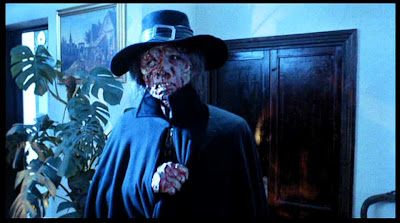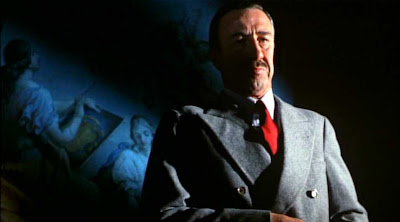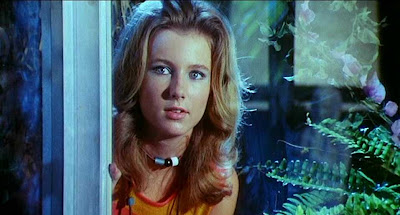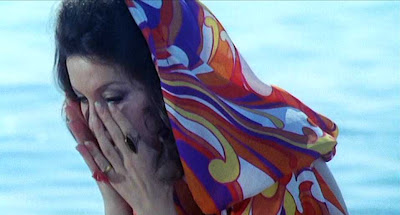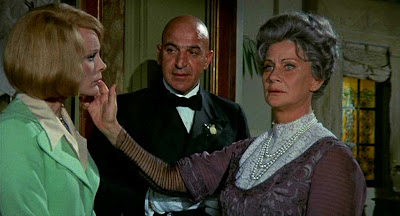
The box says "8 Films By Mario Bava," but rest assured, there are actually nine. Here's the rundown on all the specs and extras:
BARON BLOOD
Uncut European version
Widescreen (1.85:1) presentation, enhanced for 16x9 televisions
Audio Commentary by Mario Bava biographer Tim Lucas
Theatrical Trailer
Radio Spots
BAY OF BLOOD (formerly TWITCH OF THE DEATH NERVE)
English version
Widescreen (1.78:1) presentation, enhanced for 16x9 televisions
Audio Commentary by Mario Bava biographer Tim Lucas
Theatrical trailer
Radio Spots
Poster and still galleries
5 DOLLS FOR AN AUGUST MOON
International version in Italian with English subtitles and English-dubbed
Widescreen (1.85:1) presentation, enhanced for 16x9 televisions
FOUR TIMES THAT NIGHT
International version in Italian with English subtitles
Widescreen (1.78:1) presentation, enhanced for 16x9 televisions
KIDNAPPED / RABID DOGS
YES! Two versions: Mario Bava’s original 1975 work print (RABID DOGS) and the 2002 alternate version (KIDNAPPED)
Widescreen presentation (1.78:1), enhanced for 16x9 televisions
In Italian with English subtitles
Featurette: “End of the Road: Making Rabid Dogs and Kidnapped”
Audio Commentary by Mario Bava biographer Tim Lucas
Mario Bava bio
LISA AND THE DEVIL / HOUSE OF EXORCISM
Two versions: Mario Bava’s original film (LISA AND THE DEVIL) and the alternate "Mickey Lion" version (HOUSE OF EXORCISM)
Widescreen (1.85:1) presentation, enhanced for 16x9 televisions
Audio Commentary for Lisa and the Devil by Mario Bava biographer Tim Lucas
Audio Commentary for House of Exorcism by Producer/Co-Director Alfredo Leone
Theatrical trailers
Radio Spot
ROY COLT AND WINCHESTER JACK
In Italian with English subtitles
Widescreen (1.85:1) presentation, enhanced for 16x9 televisions
And then there are the single-disc Mario Bava DVD releases:
ERIK THE CONQUEROR
International version in Italian with English subtitles and English-dubbed
Widescreen presentation (2.35:1), enhanced for 16x9 televisions
Audio Commentary by Mario Bava biographer Tim Lucas
Audio Interview with actor Cameron Mitchell
U.S. and German trailers
Poster and still galleries
Mario Bava bio
THE MASK OF SATAN (BLACK SUNDAY)
International version with English dubbing
Widescreen presentation (1.66:1), enhanced for 16x9 televisions
Audio commentary by Mario Bava biographer Tim Lucas
U.S. and International trailers
TV spot
Mario Bava & Barbara Steele bios
THE THREE FACES OF FEAR (BLACK SABBATH)
International version in Italian with English subtitles
Widescreen (1.77:1) presentation, enhanced for 16x9 televisions
Featurette: “A Life In Film - An Interview with Mark Damon”
Audio commentary by Mario Bava biographer Tim Lucas
International & U.S. trailers
TV spot
Radio spot
Poster and stills gallery
Mario Bava & Boris Karloff bios
The good news is that RABID DOGS, though not mentioned on the BAVA COLLECTION 2 packaging, will be included in the set, and I've been assured that the feature masters have all been improved over the previous Image Entertainment releases to varying degrees. However, please note that the LISA AND THE DEVIL upgrade included in this set will not contain the sexually explicit "deleted scene" previously released, so Bava completists will need to hang on to their Image discs or Elite laserdiscs for future reference.
The set retails for $49.98, but it's being offered in some locations (
ahem) for far less. Even at full price, that works out to about five bucks per movie. An amazing value -- and a great introduction to some of Bava's best, and some of his most offbeat, work.
 Mr. and Mrs. Donnie Dunagan recently sent us the following message, which it is now time for me to share with all readers of Video WatchBlog:
Mr. and Mrs. Donnie Dunagan recently sent us the following message, which it is now time for me to share with all readers of Video WatchBlog:


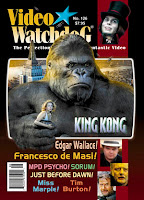
 FILM FREAK CENTRAL editor Bill Chambers was kind enough to send in the screen grab above. As Bill says, "You gotta love that Lebanon, Tennessee gas stations stock VW."
FILM FREAK CENTRAL editor Bill Chambers was kind enough to send in the screen grab above. As Bill says, "You gotta love that Lebanon, Tennessee gas stations stock VW."